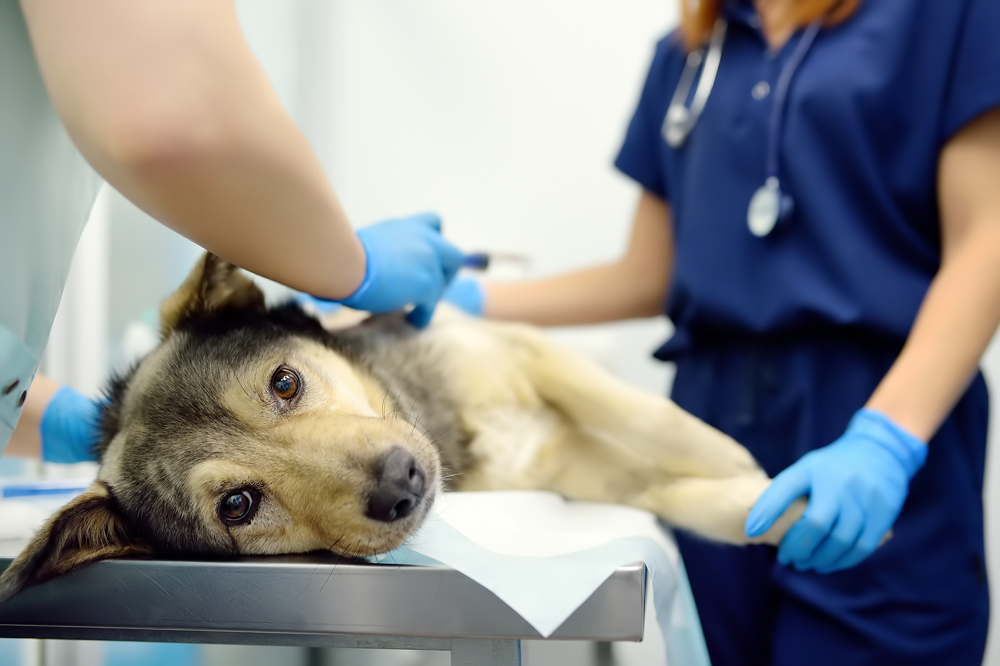Earlier this month, I came across an article in my sister’s copy of The Journal of Hospital Medicine (she works in human healthcare as a Hospitalist Physician Assistant) ominously titled “Preparing for the Unthinkable: The Resurgence of Vaccine-Preventable Diseases.” It described concerns for rising rates of previously eradicated or uncommon diseases such as measles, polio, diphtheria, and pertussus in human populations due to declining vaccination rates. As a Veterinary professional, I couldn’t help but ask—are we seeing similar trends in animal health?
Unfortunately, it appears that the answer may be yes.
Are Vaccine-Preventable Diseases Making a Comeback?
While data on the prevalence of diseases in companion and farm animals is certainly not as widespread as it is in human healthcare, anecdotal and regional reports seem to indicate that outbreaks are on the rise. I’ve certainly seen recent reports that Veterinary professionals have observed an uptick in diseases we hoped were largely under control.
Distemper outbreaks in dogs, parvovirus surges in shelter populations, feline panleukopenia clusters, and even equine influenza have all been reported in various regions. And we’ve even seen a few cases of rabies across local regions.
Data on national or regional prevalence of vaccinated versus unvaccinated animals is difficult to consolidate, but we can hypothesize that lapses in vaccination protocols—whether due to misinformation, financial hardship, or sheer forgetfulness—are contributing to increased disease risk across multiple species.
Why Aren’t People Vaccinating?
The reasons behind under-vaccination in Veterinary patients are complex and multifaceted. Some mirror those in human healthcare:
- Misinformation and fear: Vaccine hesitancy has unfortunately spilled over into the Veterinary realm. Social media misinformation, confusion over vaccine “necessity,” and fear of adverse reactions have made some pet owners question established protocols.
- Economic hardship: Cost is a major barrier for many pet owners, especially in underserved communities. In areas without access to low-cost Veterinary services, routine vaccinations and preventative healthcare are sometimes the first things to be skipped.
- Access and prioritization: The ongoing Veterinary workforce shortage means some pet owners struggle to get timely appointments, and their pets’ preventive care can get lost in the shuffle of a hectic personal schedule. Others have difficulty if there aren’t clinics in their immediate area, especially if transportation is an issue.
- Lack of awareness: Some people simply don’t know what their animals need—or assume that one series of “puppy/kitten shots” or a single rabies vaccine covers their pet for life. There may also be confusion with current vaccination status or future vaccination needs with pets adopted from shelters or rescues.
Which Species Are at Risk?
The risk extends across species lines:
- Dogs and Cats: We’re seeing more cases of parvovirus, distemper, and panleukopenia, especially in shelter or rescue environments and among animals with unknown vaccination history.
- Equine Patients: Outbreaks of equine herpesvirus, influenza, west nile virus, and strangles have been tied to lapsed vaccination or poor biosecurity.
- Livestock: Inconsistent vaccine use in cattle, goats, and sheep has allowed diseases like blackleg, tetanus, and respiratory pathogens to re-emerge, particularly in backyard or hobby farms.
- Wildlife and Zoo Animals: While vaccine use in wildlife is more targeted, some conservation and zoological programs rely on vaccinations to protect against diseases like rabies, distemper, and tuberculosis. Disease resurgence in domestic animals could spill into wild populations—or vice versa.
Could This Trend Continue?
Without intervention, the resurgence of vaccine-preventable diseases is likely to persist.
Populations of unvaccinated or under-vaccinated animals create reservoirs for disease. This not only puts animals at risk, but also the humans who care for them—especially with zoonotic diseases like rabies or leptospirosis.
What Can We Do?
As Veterinary professionals, we have a responsibility to communicate the importance of vaccines clearly, confidently, and compassionately. Here’s how we can help:
- Educate, don’t shame: Many clients are misinformed, not negligent. Meet them with patience, provide evidence-based guidance, and address concerns respectfully.
- Promote low-cost resources: Point clients toward vaccine clinics, community resources, and financial assistance programs when available.
- Integrate preventive care reminders: Encourage consistent recheck schedules and follow-up systems to keep patients on track.
- Stay informed: Keep up with regional disease alerts and trends so we can tailor vaccination strategies based on risk.
A Shared Responsibility
The resurgence of vaccine-preventable diseases is not limited to human healthcare—it’s a growing concern in Veterinary medicine, as well. As Veterinary professionals, we play a critical role in safeguarding animal health through prevention. Vaccines remain one of the most powerful tools at our disposal, protecting not just individual patients, but entire populations.
Now is the time to reaffirm the importance of routine vaccination—before the preventable becomes the commonplace.

